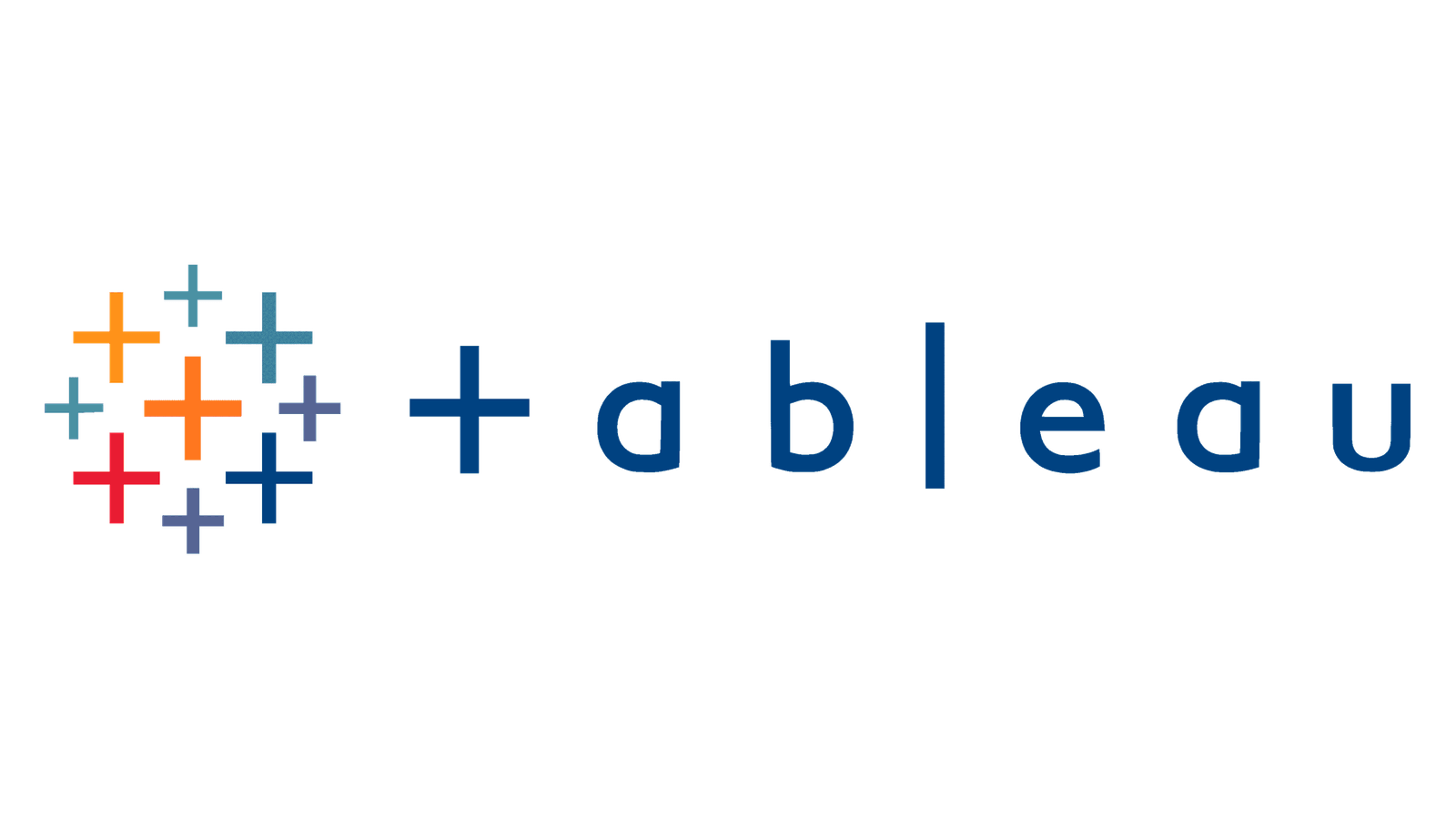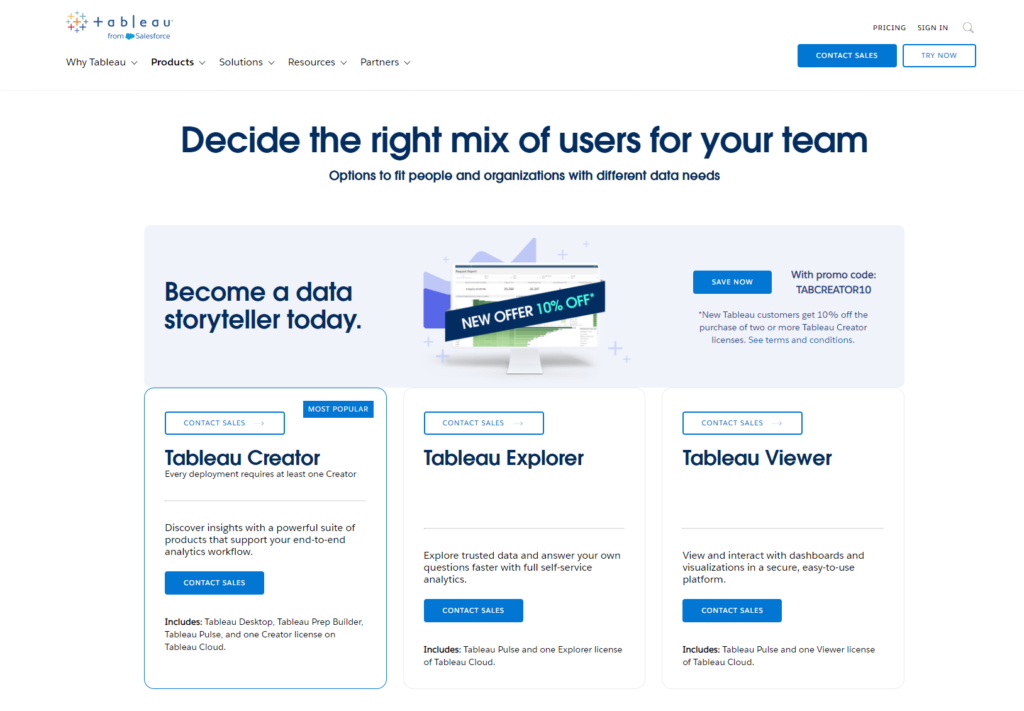Choosing the right analytics tool is pivotal in today’s data-driven landscape, where insights drive decisions across every level of an organization. In the vast sea of analytics platforms, two names often rise to the surface: Tableau and Optimizely. Each offers unique strengths, tailored to different analytics needs and user profiles. This article embarks on a comparative journey to uncover which tool might best fit your business needs, starting with an exploration of their Ease of Use and Learning Curve.
Tableau | Optimizely |
|---|---|
| G2 Score – 4.4 out of 5 stars | G2 Score – 4.5 out of 5 stars |
| TrustRadius Score – 8.2/10 | TrustRadius Score – 8.7/10 |
Ease of Use and Learning Curve
The initial ease of adopting an analytics platform and the journey to mastering its use can significantly impact the speed and effectiveness with which teams can start deriving actionable insights. Let’s examine how Tableau and Optimizely stack up in this regard.
Tableau: Power Meets Flexibility
Tableau is celebrated for its powerful and flexible data visualization capabilities, enabling users to create a wide range of visualizations from simple charts to complex interactive dashboards. This flexibility, however, comes with a learning curve. New users might find Tableau’s array of features daunting at first.
Nonetheless, Tableau has invested in a rich ecosystem of educational resources, including tutorials, forums, and in-person training sessions, aimed at empowering users to climb this curve. The effort to learn Tableau is often rewarded with profound insights and the ability to tailor analyses to very specific business questions.
Optimizely: Specializing in Experimentation with Ease
Optimizely takes a different approach, specializing in experimentation and A/B testing with a strong emphasis on user experience optimization. Its platform is designed to be intuitive, allowing marketers and product managers to set up and run experiments without extensive technical knowledge.
The learning curve for Optimizely is generally considered gentler than that of Tableau, particularly for those focused on website optimization and personalization strategies. However, while Optimizely excels in its niche, its scope for broader data analytics and visualization is more limited compared to Tableau.
Data Integration Capabilities
This aspect is crucial as the ability to seamlessly integrate and manage data from a variety of sources can significantly enhance the efficiency and effectiveness of your analytics initiatives.
In today’s digital ecosystem, businesses accumulate data from an array of sources, including CRM systems, marketing platforms, web analytics tools, and more. The capacity of an analytics tool to integrate with these diverse data sources determines how well it can provide a unified view of business activities and customer interactions.
Tableau: Robust and Versatile Data Integration
Tableau is recognized for its robust data integration capabilities, allowing users to connect to virtually any data source, from SQL databases to cloud services like Google Analytics and Salesforce. This versatility is one of Tableau’s core strengths, enabling businesses to bring together disparate data streams for comprehensive analysis.
Tableau’s data management features further allow for the cleaning, transforming, and preparation of data, ensuring that analyses are based on accurate and relevant information. This extensive integration and data management functionality make Tableau an ideal choice for organizations that require a holistic view of their data landscape to drive informed decisions.
Optimizely: Focused Integration for Experimentation
Optimizely, while more specialized than Tableau, offers focused integration capabilities that are particularly valuable for its core use case of website optimization and experimentation. It integrates seamlessly with web analytics platforms, content management systems, and A/B testing tools, facilitating a smooth workflow for setting up and analyzing experiments.
This targeted approach to integration ensures that businesses can easily leverage existing data to design, execute, and evaluate experiments, although it may not provide the same breadth of data connectivity as Tableau. Optimizely’s integration strengths lie in its ability to enhance web optimization efforts with relevant data insights.
Cost and ROI
Understanding the financial implications and the potential value each platform can bring to your business is crucial for making an informed decision. The investment in an analytics platform isn’t just about the upfront cost or subscription fees; it’s about the return that investment generates over time. This includes the platform’s ability to drive actionable insights, improve decision-making, and ultimately contribute to the bottom line.
Tableau: Comprehensive Analytics with Varied Investment Levels
Tableau offers a range of pricing models to cater to different types and sizes of businesses, from individual users to large enterprises. While Tableau might represent a significant investment, especially for larger setups requiring server or cloud infrastructure, its comprehensive analytics capabilities can offer substantial returns.
The depth and breadth of insights Tableau can uncover across various business functions can lead to improved operational efficiencies, enhanced customer understanding, and better strategic decision-making. The ROI with Tableau often manifests in the long-term gains from these comprehensive insights, making the investment worthwhile for businesses that can fully leverage its capabilities.
Optimizely: Focused Investment for Specific Gains
Optimizely, with its focus on website optimization and experimentation, presents a different cost structure. It is typically subscription-based, with pricing that varies depending on the scale and complexity of the experimentation needs. For businesses focused on improving their digital experiences, the investment in Optimizely can quickly pay off by directly impacting conversion rates, customer engagement, and overall digital performance.
The ROI with Optimizely is often more immediate and quantifiable, especially when specific optimizations lead to measurable improvements in user behavior or sales conversions.

Related: Check out our free SEO suite

Real-time Data Analysis and Reporting
The ability of an analytics tool to offer insights in real-time is increasingly crucial in fast-paced business environments where timely information can drive immediate and impactful decisions.
The landscape of data analytics is rapidly evolving, with a growing emphasis on the ability to process and analyze data as it happens. Real-time data analysis enables businesses to react swiftly to trends, make adjustments to live campaigns, and optimize operations on the fly.
Tableau: Comprehensive but with Limitations in Real-time
Tableau is highly regarded for its comprehensive data analysis and visualization capabilities, allowing for deep dives into historical data and trend analysis. While it does offer some real-time data capabilities, especially when connected directly to data sources that update in real-time, there are limitations.
The platform is optimized for batch processing, and while it can handle near-real-time data, the refresh rate and the extent to which it can offer instant insights might not meet all real-time analysis needs. For businesses requiring in-depth, historical data analysis with occasional real-time data views, Tableau provides a robust solution.
Optimizely: Streamlined for Immediate Insights
Optimizely, focusing on website optimization and experimentation, is inherently designed to provide immediate insights. Its real-time data analysis capabilities are essential for running A/B tests and optimizing user experiences, allowing businesses to see how changes affect user behavior as it happens.
This focus on real-time insights makes Optimizely particularly valuable for marketers and product managers looking to quickly iterate and improve digital experiences. While its scope is more limited than Tableau’s, Optimizely excels in delivering the specific, timely insights needed for effective website and product optimization.
Scalability and Performance
This comparison sheds light on how each platform can support the growth of your business and maintain performance at scale. In an age where data is exponentially growing, the scalability of an analytics tool is paramount. It ensures that as your business grows, your chosen analytics solution can handle an increasing volume of data and user queries without a decline in performance.
Tableau: Built for Enterprise Scale
Tableau is designed with scalability in mind, making it an excellent choice for large enterprises or businesses with complex data needs. It supports handling vast amounts of data across various departments, ensuring that insights remain accessible even as demands on the system increase.
Tableau’s architecture is robust, allowing for the distribution of data processing tasks to optimize performance. This scalability ensures that businesses can rely on Tableau for their analytics needs today and in the future, as they grow and their data becomes more complex.
Optimizely: Agile and Efficient
Optimizely, while perhaps not designed with the same enterprise-level scalability in mind as Tableau, offers agility and efficiency, especially useful for its core focus on experimentation and website optimization. Its performance is tailored to support real-time insights and rapid iteration cycles, critical for A/B testing and user experience optimization.
Optimizely’s platform is capable of scaling to meet the needs of most businesses focused on digital product and marketing optimization, ensuring that performance remains reliable as experimentation and data collection scale up.
Customer Support and Community Resources
This aspect is crucial for businesses that rely on timely assistance and a wealth of resources to solve issues, learn best practices, and fully leverage the analytics platform’s capabilities.
The quality of customer support and the richness of community-driven resources can significantly impact user satisfaction and the overall effectiveness of an analytics platform. This support is not just about resolving technical issues but also about providing a learning ecosystem for users to continuously improve and innovate.
Tableau: Extensive Support and a Vibrant Community
Tableau is well-known for its extensive customer support system and vibrant community. Users have access to a wide range of support options, including technical support, a comprehensive knowledge base, user forums, and live training sessions. Moreover, Tableau’s community is one of its strongest assets, offering an enthusiastic and engaged user base that shares insights, visualizations, and best practices.
This community engagement not only helps in solving specific problems but also inspires users with new ideas and approaches for data visualization and analysis. The Tableau Public platform further encourages this sharing culture by allowing users to publish and explore dashboards created by others.
Optimizely: Targeted Support Focused on Optimization
Optimizely offers a more targeted approach to customer support, focusing on the specific needs of businesses engaged in website optimization and experimentation. Its support system includes documentation, email support, and dedicated account management for premium clients.
While Optimizely may not boast as broad a community as Tableau, it hosts forums and resources specifically tailored to experimentation and optimization practices. This focused support and resource ecosystem is invaluable for users looking to maximize their ROI on digital experiments and ensure their optimization strategies are based on sound data analysis.
Pricing
Tableau:

Optimizely:

Conclusion
In concluding our comparative exploration of Tableau and Optimizely, we’ve journeyed through key areas such as ease of use, data integration, real-time analysis, scalability, cost, and customer support. Each platform shines in its unique way, tailored to meet distinct business needs and objectives.
Tableau excels as a comprehensive analytics solution, offering robust data integration, extensive customization, and powerful scalability. Its strength lies in accommodating a wide array of data analysis needs across various business functions, supported by a vibrant community and extensive learning resources. Tableau is ideally suited for organizations seeking deep, actionable insights from complex datasets and those willing to invest in mastering its capabilities.
Optimizely, on the other hand, focuses on optimizing digital experiences through targeted experimentation and A/B testing. It stands out for its ease of use, streamlined real-time data analysis, and focused scalability, catering specifically to marketing teams and product managers aiming to enhance online user experiences. Optimizely’s approach is geared towards businesses looking for immediate, measurable impacts on digital performance, with support and resources tailored to this end.
Read Next:
- GetResponse vs Zoho Campaigns: The Best Email Marketing Tool for 2024
- AWeber vs ActiveCampaign: The Best Email Marketing Tool
- Constant Contact vs Campaigner: Best Email Marketing Tool
- GetResponse vs Omnisend: The Best Email Marketing Tool for 2024
- AWeber vs Benchmark Email: The Best Email Marketing Tool




















